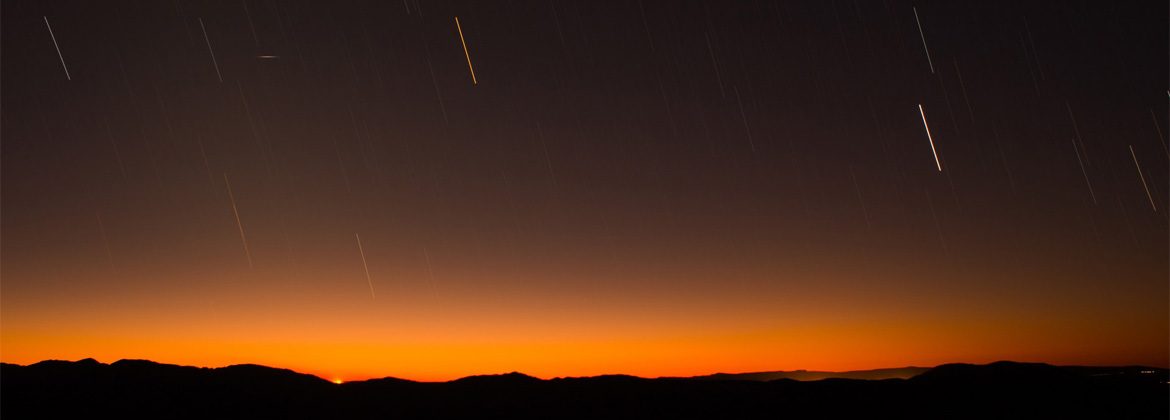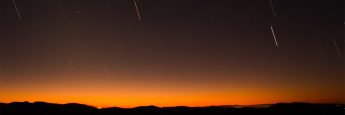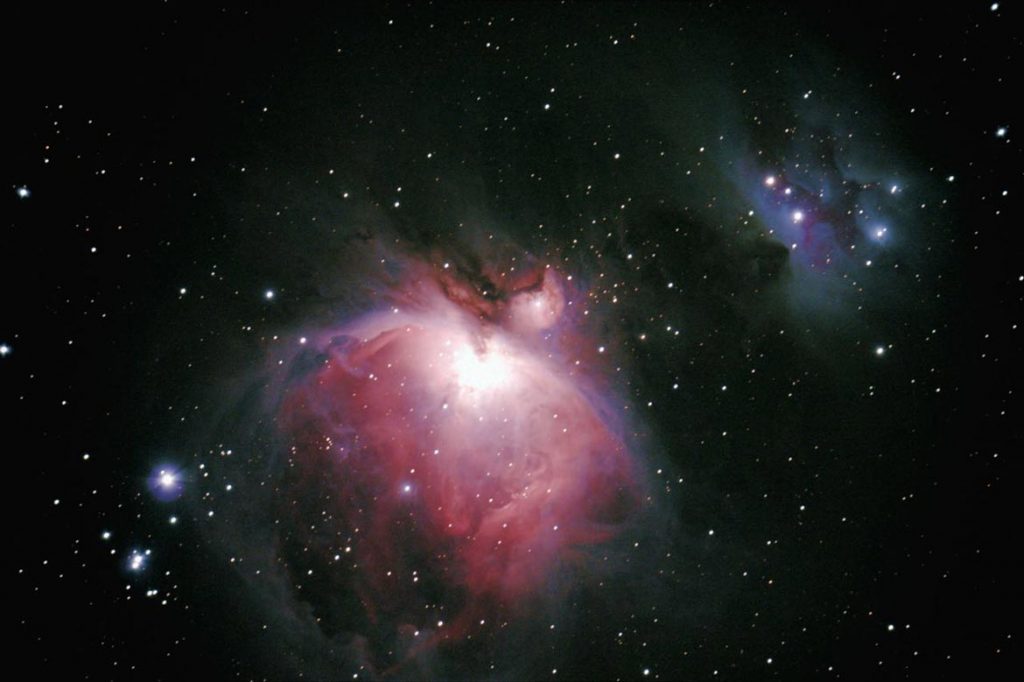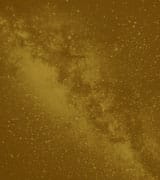Astronomical Ephemeris – July, 2022
Astronomical Ephemeris – July, 2022


When the Earth, orbiting around the sun, passes through a wake of debris from a comet or asteroid, the phenomenon “meteor shower” occurs. This is the highlight of the July Astronomical Ephemeris.
At dawn from the 28th to the 29th of this month, the peak of the meteor shower called Southern Delta Aquariids will occur. An average production of 13 to 30 meteors per hour is estimated to streak across the sky in long streaks with shades of yellow and bluish yellow.
That day, the moon will be in the new phase and, therefore, the sky will be darker, providing better visibility of the popularly known “shooting stars”. To better observe the phenomenon, direct your gaze towards the geographic east and let your vision get used to the darkness for about 15 minutes.
This meteor shower has been active since July 18 and will continue until August 21. It’s best viewed from the southern hemisphere because its radiant (point from which meteors apparently emanate), the constellation Aquarius, near the star Delta Aquarii, is highest in the sky south of the equator. It is also observable in the northern hemisphere, but at lower rates. During the peak of the phenomenon, the radiant will have a visit from the planet Jupiter.
The origin of Delta Aquariids is not known for sure. Currently, astronomers consider its “parent object”, which are comets or asteroids that give rise to the shower, to be the comet 96P Machholz, discovered in 1986.
Meteoroids are pieces of rocky or metallic matter roaming through space in varying orbits around the Sun and their sizes, most of the time, resemble that of a small stone. When such a body comes into contact with the Earth’s atmosphere, the friction with the Earth’s atmosphere causes it to heat up to the point of generating a glow perceivable by our eyes. This glowing body is called a meteor.
The streak in the sky, which lasts for a few seconds, most often completely consumes the meteor. Most meteors burn up completely on friction with the atmosphere, but when that doesn’t happen, the rest hit the ground and receive the suffix “ito”, used in mineralogy, becoming called meteorite.
When the Earth, in its orbit around the Sun, passes through a region with a lot of dust – the meteoroids – we have a greater incidence of these bodies entering the Earth’s atmosphere, causing the so-called meteor showers
Other observable astronomical events around the world
July 13 – Supermoon
July 15 – Conjunction between the Moon and Saturn
They will be between the constellations of Capricorn and Aquarius.
July 18 – Conjunction between the Moon and Jupiter
They will be between the constellations of Pisces and the Whale.
July 21 – Conjunction between the Moon and Mars
They will be in the constellation of the Whale.
July 23 – Moon encounters the Pleiades star cluster
July 26 – Conjunction between the Moon and Venus
They will be in the constellation of Gemini.
Know more
The Moon has its brightness intensified in the Supermoon. The phenomenon happens when the full moon coincides with the perigee, which is the point of maximum approach to the Earth.
During the Supermoon – a term that originated among astrologers in the late 1970s – the lunar disk can increase by up to 14% in size, but it’s not so noticeable to our naked eyes, and by up to 30% of its brightness, the aspect that our eyes perceive the most.
The Moon’s elliptical orbit around the Earth causes variations in distance from our planet. It has two distinct points, which are named apogee and perigee. The apogee refers to the position of maximum distance in relation to the Earth and the perigee, the position of maximum approach.
The Pleiades is an open star cluster located in the constellation of Taurus that is fascinating because it contains thousands, maybe even hundreds of thousands of intensely bright stars, many of them up to a hundred times brighter than the Sun, united by the same element, a common gravitational field, without a definite form. With the naked eye, six stars can be seen from the Earth.
The phenomenon called “conjunction” occurs when the observer here on Earth has the apparent view that two or more celestial bodies are very close. This proximity between the celestial bodies that our eyes perceive, without the help of equipment, is not real, they are actually very far from each other.
July 6 – First Quarter
July 13 – Full Moon
July 20 – Last Quarter
July 28 – New Moon
Sources: jpl.nasa.gov/calendar / solarsystem.nasa.gov / in-the-sky.org / Stellarium.org / earthsky.org / ov.ufrj.br / planetary ephemeris – Jet Propulsion Laboratory (JPL) / jpl.nasa.gov / rmg.co.uk / amsmeteors.org / imo.net – International Mteor Organization / canaltch.com.br

The astronomical ephemeris are a monthly schedule prepared by the Astronomy Sector, which is one of the 12 that make up the PRÓ-VIDA Laboratory Department. In the department, studies, research and scientific experiments related to various topics are developed, as well as field activities and lectures.

The astronomical ephemeris are a monthly schedule prepared by the Astronomy Sector, which is one of the 12 that make up the PRÓ-VIDA Laboratory Department. In the department, studies, research and scientific experiments related to various topics are developed, as well as field activities and lectures.









